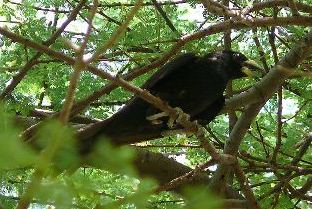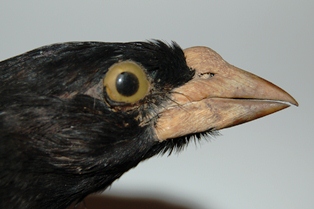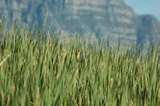Weaver news


The White-billed Buffalo-Weaver Bubalornis albirostris is white-billed. The adult (photo above left, from wikipedia) is black, with white feather bases showing through as small patches on the lower back, flanks and sides of breast; a white wing patch is visible in flight. The conical bill is white and swollen in breeding males (photo above right, from specimen 90331 in Leiden), otherwise black. The immature bird is dark brown with white mottling on the underparts. This species also has a phalloid organ (exposed in photo above left, see also Red-billed Buffalo-Weaver). 
No subspecies of the White-billed Buffalo-Weaver are recognised. In the past it has been regarded as conspecific with the Red-billed Buffalo-Weaver). It occurs from Senegal across the savanna belt to western Ethiopia and Kenya (see map above, based on Birds of Africa). In 2009 it was recorded from Tanzania for the first time, from Naani Hill Gate, Serengeti National Park.
The White-billed Buffalo-Weaver feeds on seeds, including crops such as millet; also fruit, grasshoppers, termites, beetles and their larvae, and also small amimals such as frogs. They forage on the ground, search for insects in cowpats, and remove ectoparasites like ticks from cattle. Large noisy, feeding flocks may include individuals from several colonies. Chicks are fed on insects. The White-billed Buffalo-Weaver is strongly colonial (eg. photo left, from phown 3716). In a 50km transect survey in baobab savanna in Senegal, 31 trees had large colonies and 29 trees had small colonies; while in acacia savanna, 214 nests were counted in 24km. The nest is a large compound structure, >1 m in diameter, containing up to 10 individual nest chambers. It is made of dry thorn twigs and branches, and lined with grass and green leaves. The nest is sometimes solitary. The nest entrance is sometimes surrounded by long thorny twigs sticking out. It is built mainly by the male and both sexes add lining. Males may steal material from neighbours, triggering raucous calling. Nest building activity often follows rainfall. In Tanzania, nests may be abandoned, then re-used in subsequent years. There is 1 PHOWN record (see PHOWN summary), from the extreme western end of its range. Many more PHOWN records are needed for this common species. Submit any weaver nest records to PHOWN (PHOtos of Weaver Nests) via the Virtual Museum upload site. PHOWN summary Previous Wedn: Vieillot's Black Weaver Full weaver species list |











